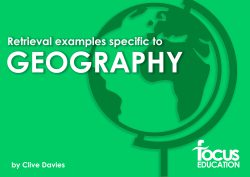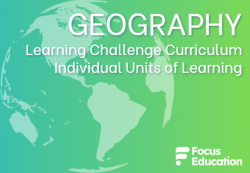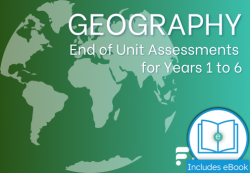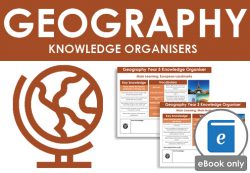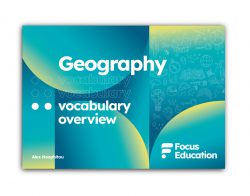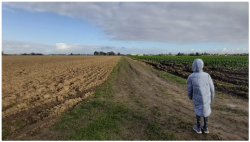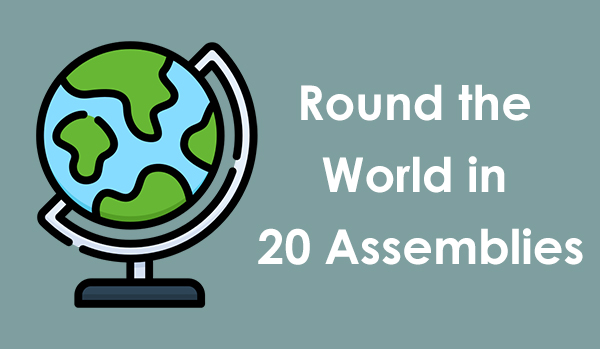
Tim Nelson & his love for the Geography Curriculum…
Geography is my subject, though if I’ve ever visited your school, you will probably be surprised to hear that having guided around like a forgetful elderly relative and repeatedly reminded me where the staffroom is and where the main entrance is located. My sense of direction is appalling. But I do know about the formation of granite tors on Dartmoor thanks to Mr Ramsden, the best teacher I had at secondary school. And I do know about the bars of Barcelona circa 1988 thanks to a university geography field trip. But what goes on geography field trip stays on geography field trip.
Anyway, as a geographer at heart, if not necessarily by aptitude, I take a keen interest in the geography curriculum in schools. I have seen some wonderful examples of work and I thought it might be useful to share one of these as schools welcome back all the pupils and subject leaders consider a return to some sort of normality to long-term and medium-term planning, perhaps revising these to take into account the disruption caused by the lockdown.
Geography analysis in schools
Geography can sometimes be a poor relation when compared with its ‘twin’ of history. This can be because of teacher subject knowledge being stronger in history and sometimes because history units are seen as lending themselves more to themes or titles for units of work.
A common issue that teachers have shared, and that I have found in pupil voice monitoring, is many children do not have a clear comprehension of place. Identifying the location of their school or town on a map of the UK is sometimes problematic and it doesn’t help that ‘county’, ‘country’ and ‘continent’ are all similar words when I ask in which of these they live.
The Round the World in 20 Assemblies Geography Project
A piece of work we are introducing in one school is the ‘Round the World in 20 Assemblies’ project. This is aimed at addressing the basic knowledge of countries and continents, some of the vocabulary from the national curriculum programme of study, and the concept of a 2D map of the world being a representation of the globe.
A large map of the world is in the school hall anyway (Mercator projection I believe for the geographers out there) so this will be used as the basis for the project.
In the first assembly, the headteacher will show a globe to the whole school and demonstrate how the map is an attempt to show this in 2D. The headteacher will unpeel an orange to demonstrate this.
We often assume the children will just understand a world map is a 2D version of a spherical planet but do all of them really understand this? Then the headteacher will explain that in each assembly the school logo will be travelling a bit further east around the world, beginning from England.
It would be stopping at each of the countries various classes were studying that term. When this happens, the respective classes will do the assembly, telling the rest of the school what they had learned and using geographical vocabulary and knowledge. But most days the teacher leading assembly will begin with asking the children which country and continent the logo is in at the moment, and perhaps a few questions about climate, capital city, nearby ocean etc. Then the logo will be moved a bit further E, NE, or SE and a bit further round the world with the children asked about the destination, location, position relevant to the equator etc.
As the logo is moved on the map another logo will be moved exactly the same way on the globe. This is especially important conceptually when crossing the Pacific Ocean and the logo ‘disappears’ on the right of a map only to re-appear on the left!
On most days this will be a quick minute or so at the beginning of the normal programme of assemblies. But over the term, it should be a really useful way of teaching and reinforcing so much of the locational knowledge and vocabulary many children lack, as well as contextualizing their learning in each class.
The plan was disrupted by Covid-19 but I’ll let you know how they get on when normal whole school assemblies resume, and if you decide to do something similar in your school then please let me know how it goes.
Right, off to look at possible holiday destinations. It might take me a while…
Useful Publications
Browse our range of geography related products here
Tim has been a headteacher with a successful track record; his last school had a reputation for innovation and their initiatives have been utilised by others and presented internationally.
School improvement has been at the heart of his career, working as an LLE, a School Improvement Partner, Professional Partner as well as an Ofsted inspector and mentor for trainee inspectors.


